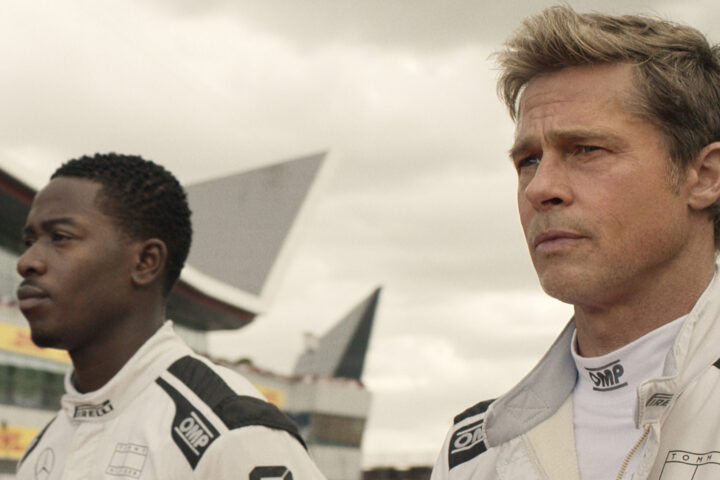A now-familiar skeptics’ refrain tends to follow James Cameron during the run ups to his often game-changing pictures—they are too expensive and rife with cost overruns that will bankrupt their studios; their onset dynamics are ruled by “king of the world” megalomania; that he has somehow calibrated wrongly “this time” and audiences are not going to show up; rinse, repeat, et al.
Yet every time, Cameron, one of the most accomplished populist film artists in history and of the few genius auteurs making movies today, delivers envelope pushing, large scale ingenuity all but unparalleled in American commercial film. “Never bet against Jim Cameron” has become a bit of a cliche, but as they tend to, it also possesses its share of truth.
What a vision Cameron realizes in his latest opus Avatar: The Way of Water, a 192-minute feat of imagination and immersion accomplished by state-of-the-art 3-D and high frame rate cinematography deployed against his magnificently conceived Pandoran worlds and large scale, accelerated action climaxes to create a singular movie experience unlike anything else, perhaps ever.
While naysayers couldn’t get their heads around Cameron’s slavish, 13-year devotion to create sequels to his 2009 all-time box office grosser and Oscar contender Avatar, Cameron has nonetheless returned to Pandora (or perhaps never left) for a second go, deepening the folklore and technique of his original to craft a more ambitious story about family ties, coming of age and the preservation of nature—about which he’s clearly and deeply concerned—rendered on such an eye-popping canvas that, despite the film’s sequel status, feels like something shiny and new in each frame. It isn’t hyperbole to state that Avatar: The Way of Water just may be a distinguished filmgoing experience across nearly a century of filmmaking.
If Cameron’s 2009 original was a visual love letter to the lushly green, neon-glowing jungles of far-off Pandora, the new picture is all about the beauty and preservation of the planet’s marine inhabitants, unsurprising given Cameron’s longtime fascination with the deep, an exploration that began with 1987’s The Abyss (a striking film all but undone by a lackluster final scene) followed by a little 1997 movie named Titanic as well as the Russian submersible doc Ghosts of the Abyss. Yet where those pictures were either darkly mysterious or elegiac, Avatar: The Way of Water’s oceanic utopia is a vivid, breathtakingly detailed thalassic macrocosm inspiring nothing short of wonderment.
Cinematic advances notwithstanding (from The Abyss to Terminator 2 to Avatar Cameron always gives us shiny new tech) the film’s narrative is through-and-through what we might expect, which is to say that the picture is rousing, soulful and often affecting within Cameron’s preferred storytelling framework of archetypal formula; his standard good guys-bad guys parable. Guess who is on which side? Similar to its 2009 predecessor, the picture is driven by dual colonial and ecological themes, this time adding in some traditional family set-ups that include the introduction of teenagers, each of whom have social and familial issues to reconcile.
The picture’s opening hour is its most rudimentary, a sort of reacquaintance for the viewer that begins some years after the first film, Jake Sully (Sam Worthington) and Neytiri (Zoe Saldana, again terrific) as parents to four children. Unsurprisingly, humans (or “sky people”) have trashed Earth’s environment and are looking to colonize Pandora. The mission is led by a flinty Edie Falco as the commander in charge of the operation (which includes a Pandoran base) with boots on the ground by Colonel Quaritch (Stephen Lang), who you may remember perished in human form at the end of the original film. This time Quaritch exists exclusive in avatar Na’vi form, and is out for revenge with Sully his number one target.
Forced to flee the military invasion, the Na’vi family includes: eldest son Neteyam (Jamie Flatters) and younger son Lo’ak (Britain Dalton), who will go through a rite of passage; adopted teenage daughter Kiri (Sigourney Weaver), daughter of Dr. Grace Augustine (also Weaver), who perished in the first film; and eight-year-old daughter Tuktirey (Trinity Jo-Li Bliss). There’s also an intriguing character named Spider (Jack Champion), the human teen son and family pal, whose lineage includes deceased father Quaritch, and the movie makes good on a growing connection between captured Spider, who cannot be transported to Earth, and his father’s nefarious avatar.
On the run, the clan settles into hiding with another Na’vi tribe, the Metkayina, who call Pandora’s coastal ocean milieu home, which includes an astonishingly conceived undersea reef. The leaders of this tribe are a king named Tonowari (Cliff Curtis) and his queen, Ronal (Kate Winslet, reuniting with Cameron for the first time since 1997’s Titanic).
This deep cover gives us the film’s miraculous second act, squarely focused on teen peer groups, pressures and rivalries, and the discovery of the aquatic wonderland beneath the surf, a new environment for the teens and one in which Cameron goes fully, expressionistically for broke in one of the most beautifully rendered and intensely immersive hours ever put to film–pulsating corals, plants, fish, original creatures both serenely beautiful and sensationally menacing fill every inch of the frame and around the viewer as the 3-D seems to envelop the audience–at several junctures I nearly felt a sense that I was floating in the surf along with the characters. The sea is also home to giant, whale-like creates named the tulkun, and swimming “with” them is one of the year’s movie delights.
The tulkun, it turns out, and their slaughter, will be crucial to drawing Jake and company out of hiding, and in the film’s third hour contains a nonstop serious of set-pieces rendering some of the most rip-roaring action ever put to screen as humans and Na’vi do battle above and below the sea, on multiple planes, on beasts and on water crafts, with arrows and bullets and bombs. The intricate, escalating construction of these sequences is the unmistakable mark of a genius and as sheerly enjoyable as big movie spectacle can be; action simply does not come more inspired or better built than in a James Cameron picture. I also chuckled at Cameron’s plain-speak, contemporary dialogue, particularly the Na’vi teens calling each other “bro” and “cuz” and “don’t be a wuss.”
The story itself is straightforward and, as environmentalist pleas go, not quite a substantial essay. This is not a knock, as Cameron works up a half-dozen or so emotional climaxes that are undeniably touching, included a pair of unexpected deaths that give Saldana and Winslet, punching through their motion capture performances, the opportunity to convey writ-large feeling.
Avatar: The Way of Water is sensory immersion and overload and never less than pure fun. A three hour plus movie, it took me an hour to settle in. But the second and third hours are simply magical and often mind-blowing filmmaking. There is great wonder onscreen and even an ode to Titanic with a bit of Aliens-inspired set design for good measure in the climax on top of climax final hour, amongst the best in an American film this year.
The picture absolutely must be seen in a large screen, 3-D format, with preference given to the high frame rate presentation which is undeniably groundbreaking. Film is foremost a visual storytelling medium, and hats off to Cameron for Avatar: The Way of Water and its leaps and bounds advances.
Highly recommended and not for streaming.
3 1/2 stars



